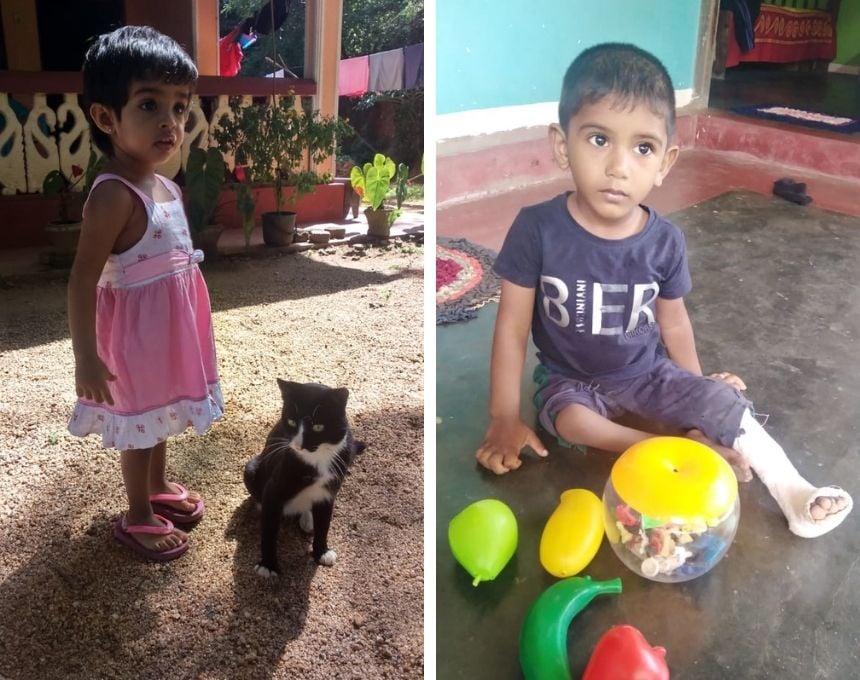This year, Humanity & Inclusion's Sri Lankan team participated in a Clubfoot Day event at the Lady Ridgeway Hospital for Children, emphasizing the importance of early treatment. Providing care for clubfoot in the weeks immediately after a child's birth can prevent them from growing up with a disability.
As part of the event, the team organized a variety of activities including a drawing contest, and a photo booth for health professionals, children, and their parents.
Awareness, early treatment crucial
Clubfoot is a malformation that appears at birth and occurs in one or both feet. Leaving an affected foot untreated could result in serious consequences for the child. Over time, the disability can prevent a child from comfortably wearing shoes, risking injury, and walking long distances can be particularly challenging. Children may also find themselves excluded from activities or facing other forms of discrimination.
All children should be able to access health care, education, and other services that will enable them to reach their full physical, intellectual, and social potential. Between 2017 and 2022, Humanity & Inclusion provided services to 1,778 children with clubfoot and trained 180 clinic providers on clubfoot management across Sri Lanka. Frontline health workers are essential in ensuring babies born with clubfoot access health care. It is only through their support and guidance that teams can ensure all children born with clubfoot receive treatment and live active, healthy lives.

Success stories: Yenuli and Zayan
Yenuli, pictured left, was born with clubfoot. Humanity & Inclusion's team and hospital staff encouraged her parents, who have regularly brought their daughter to the clinic for treatment over the past two years. With her braces on, Yenuli remained determined. She walks on her own now, and performs activities like other children her age. She still wears her braces at night. Yenuli enjoys running, dancing, drawing, and playing outside with her friends.
Zayan, right, was referred to the Orthopedic Clinic at Teach Hospital Jaffna after being diagnosed with clubfoot two years ago. His parents had never heard of the disability and were worried for his future. Though the clinic is more than 100 miles from their home, they pursued treatment for their son. Their hope was renewed as his foot changed with each casting. Zayan has completed six casting sessions and wears a brace day and night. He's an active child, who loves running through the house.
"Zayan can become anyone he wishes; his future is up to him,'' says Fanusija, his mother. “We will support him throughout every step of his dream and provide him with a quality education."
These Humanity & Inclusion's activities are possible with support from Miracle Feet through the project: "Towards universal access to clubfoot management." Humanity & Inclusion's teams implements the program at clubfoot clinics in Colombo, Kandy, Batticola and Jaffna districts.





